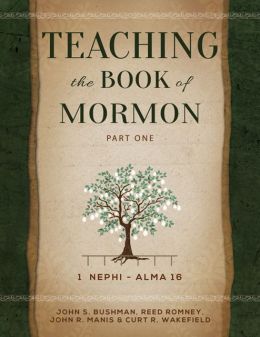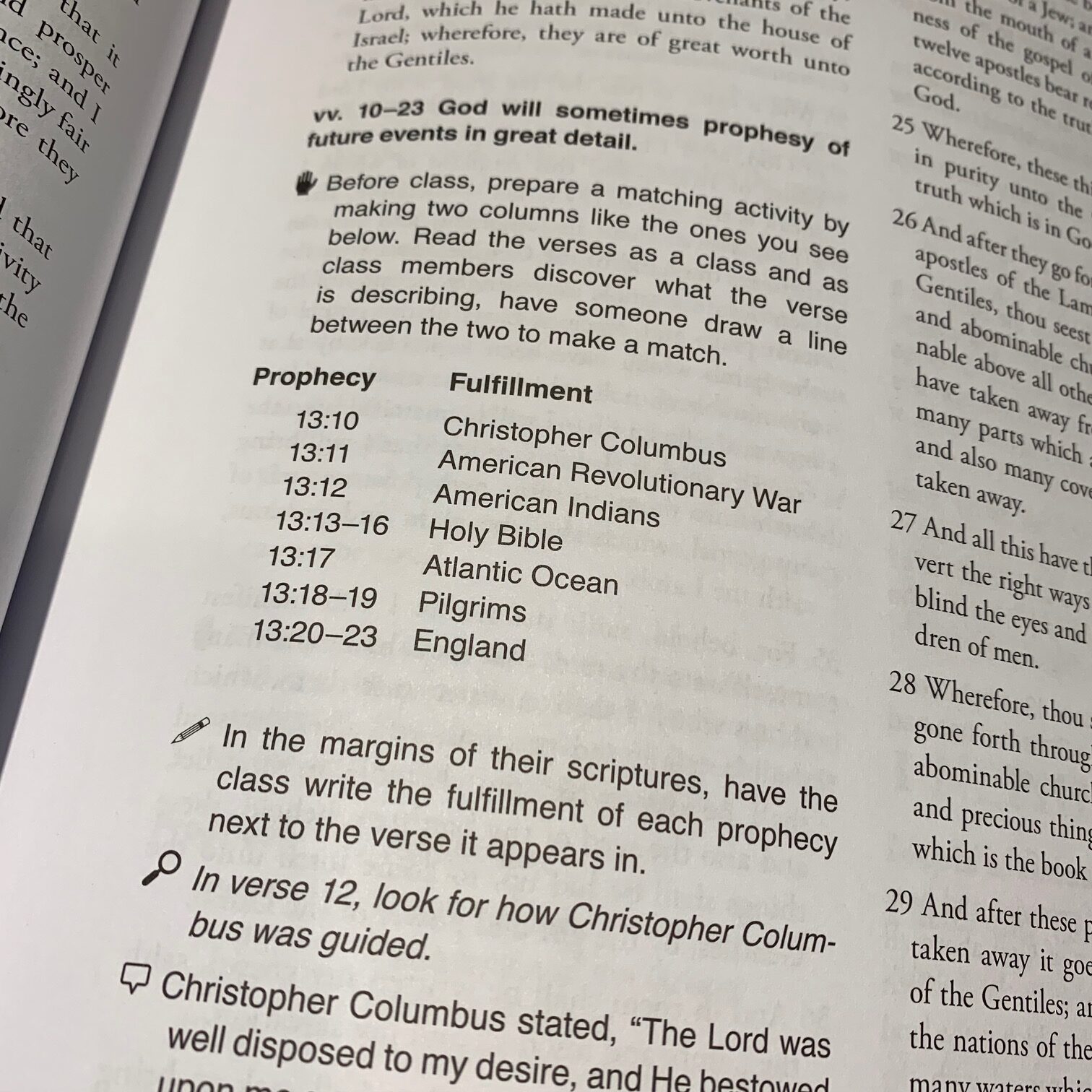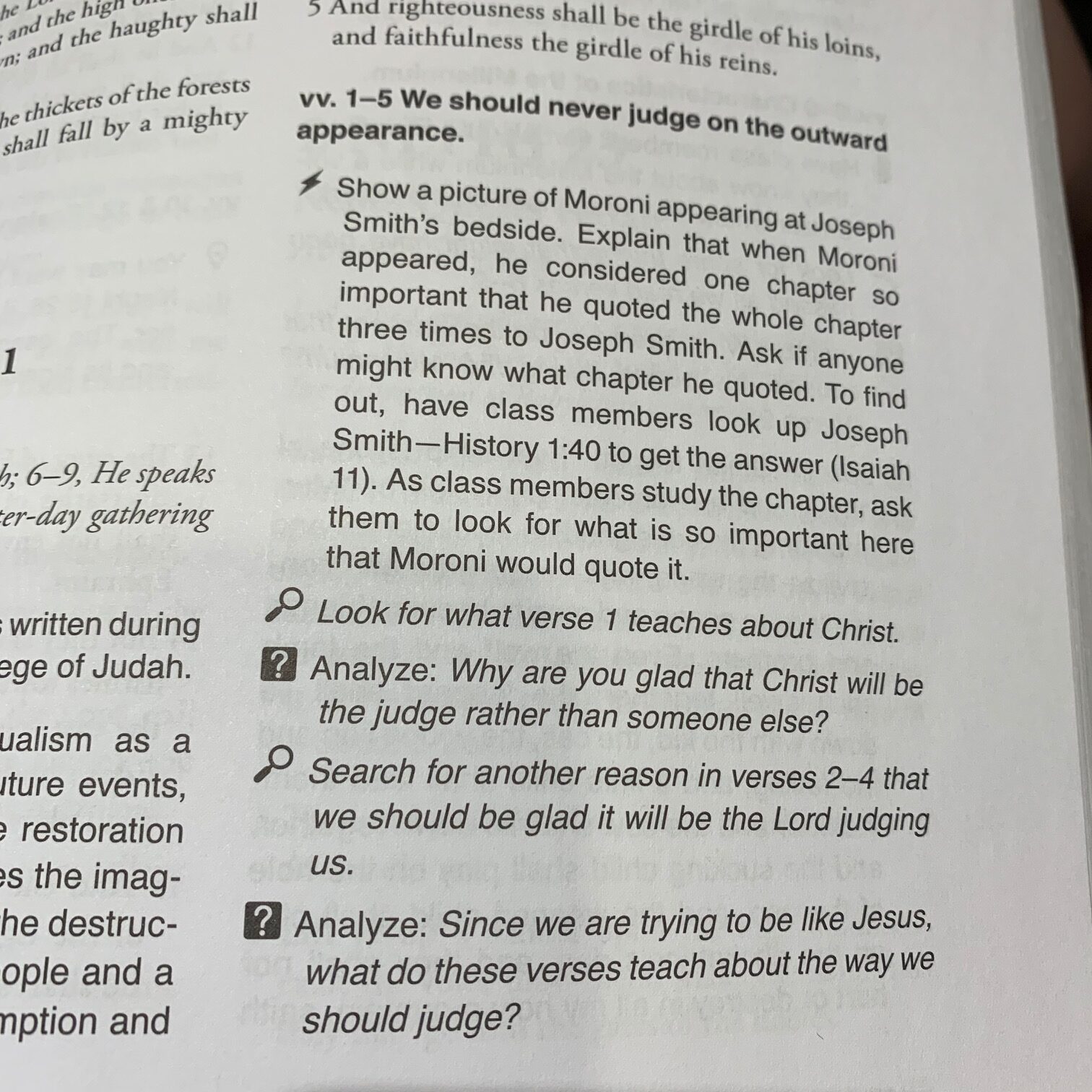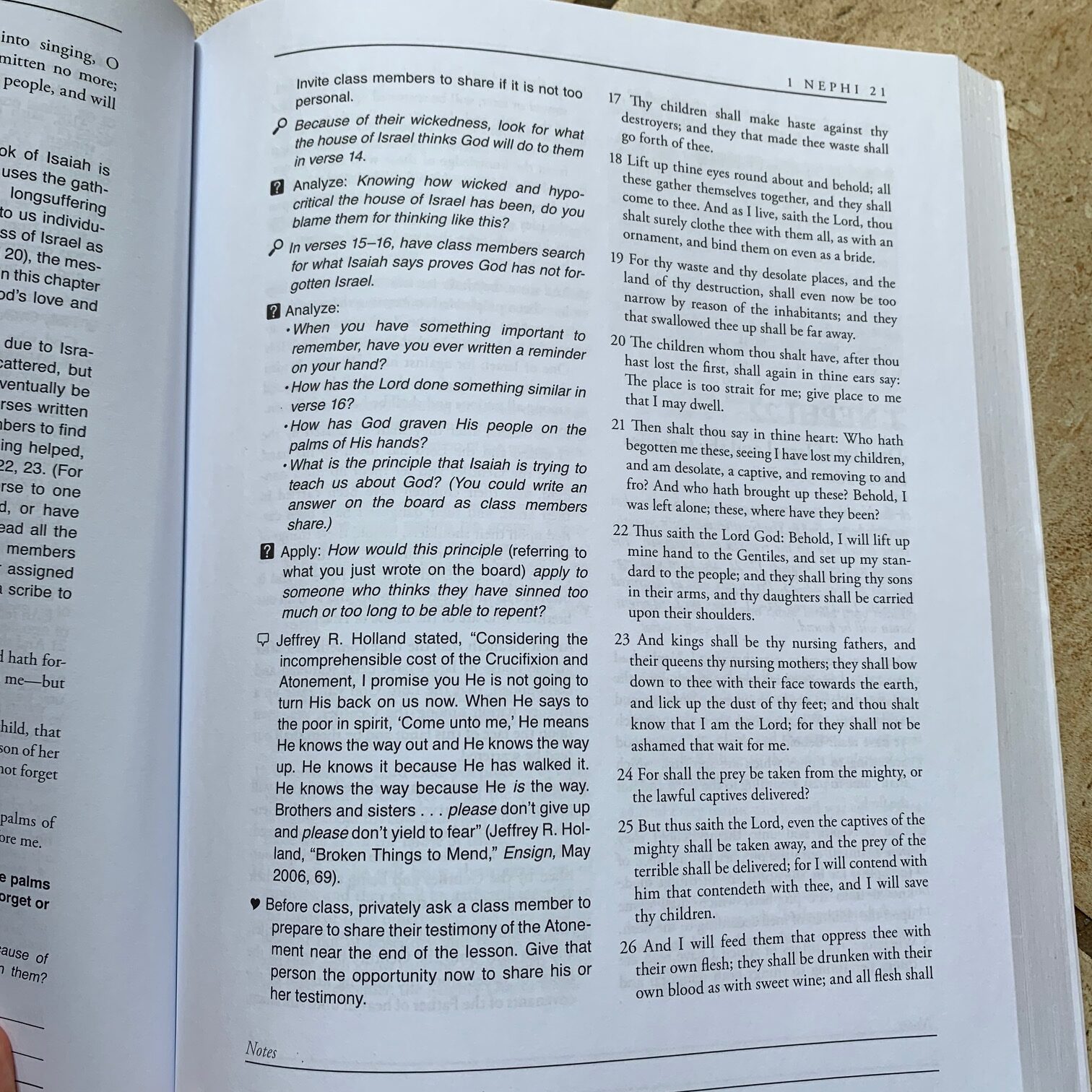I emailed John Bushman, from NW Seminary Share to see if I could do a book review of the book he recently co-authored titled Teaching the Book of Mormon, Part 1 (1 Nephi – Alma 16) by Bushman, Romney, Manis, and Wakefield. The publisher, Cedar Fort, was kind enough to send me out a copy to review. Though the dirty brown cover was a little disappointing, I was impressed when I first opened the cover and continue to be more and more impressed with the quality of ideas and sensible organization in this book. Frankly, if I were to write a book with teaching ideas, it’d be organized just like this one. I can’t say enough good things about this supplement.
Summary
Teaching the Book of Mormon, Part 1 is the first of a two-part book series created in collaboration by a group of professional Seminary teachers. Each has a wealth of experience teaching Seminary both in and outside of Utah. This book is a collection of teaching ideas that are intended to supplement teaching of the Book of Mormon in the Seminary or Sunday School classroom. Unlike David Ridges’ Made Easier series, this book does not contain Book of Mormon commentary.
Teaching the Book of Mormon, Part 1 is my kind of teaching book! It is full of activities organized by scripture, which encourages students to look more closely at the text and helps them read with greater intent. I would have given my left kidney to have had a book like this when I was teaching Old Testament two years ago! The helpful suggestions in Teaching the Book of Mormon Part One help teachers like me plan lessons more quickly and easily. I used it often as a resource when the manual activities wouldn’t work for my classroom, and I needed something more engaging.
What’s Inside?
In Teaching the Book of Mormon, Part 1 the full text of the Book of Mormon is printed with ideas for teaching that include lesson openers, “look for”s, questions to ask your students, group work suggestions, participation activities, writing activities, insights, quotations, and so-called “deep into their heart”s that are generally application activities. Helpful chapter headers include a date approximation, chapter summary, and “title” that describes what is happening in the chapter.

Every few verses you might see a chart, prophetic quote, or list of questions that can help teachers show their students how to find, analyze, and apply the messages of the scriptures in their own lives. Many passages include a challenge or writing activity that help students use what they’ve learned. See the images below for examples:
This book was a pleasant surprise for me because it is so scripturally based. I give my class daily reading assignments and we discuss or do activities during class based on what we read in the scriptures the evening before. I’ve found this to be an incredibly effective method with my class, resulting in an class reading average of 97% last year (87-100% spread). The problem is that the old manuals did not base teaching on students who had actually read the material. The old manual took a scripture or phrase and based a lesson on that, without really giving students a chance to dig into what they read. I ended up making up a lot of lessons and activities myself. Now that the Seminary curriculum has changed and everyone is supposed to read, I think most teachers will find the activities in this manual more effective than those in the Seminary manuals, which were not written for scripture readers. I found Teaching’s activities more appropriate for students who have actually read the material.
If you’ve looked at the new Book of Mormon Seminary Teacher Manual, you’ll find that it is more like Teaching the Book of Mormon, Part 1. The new manual’s approach is much more scriptural and sequential, and it is a vast improvement over the older style of manual. If you read the text of the Book of Mormon manual and didn’t find ideas that suit their students or the amount of time you have to teach, you may find supplemental ideas in Teaching the Book of Mormon Part 1 that can help you structure custom lessons for your class needs. I did it often.
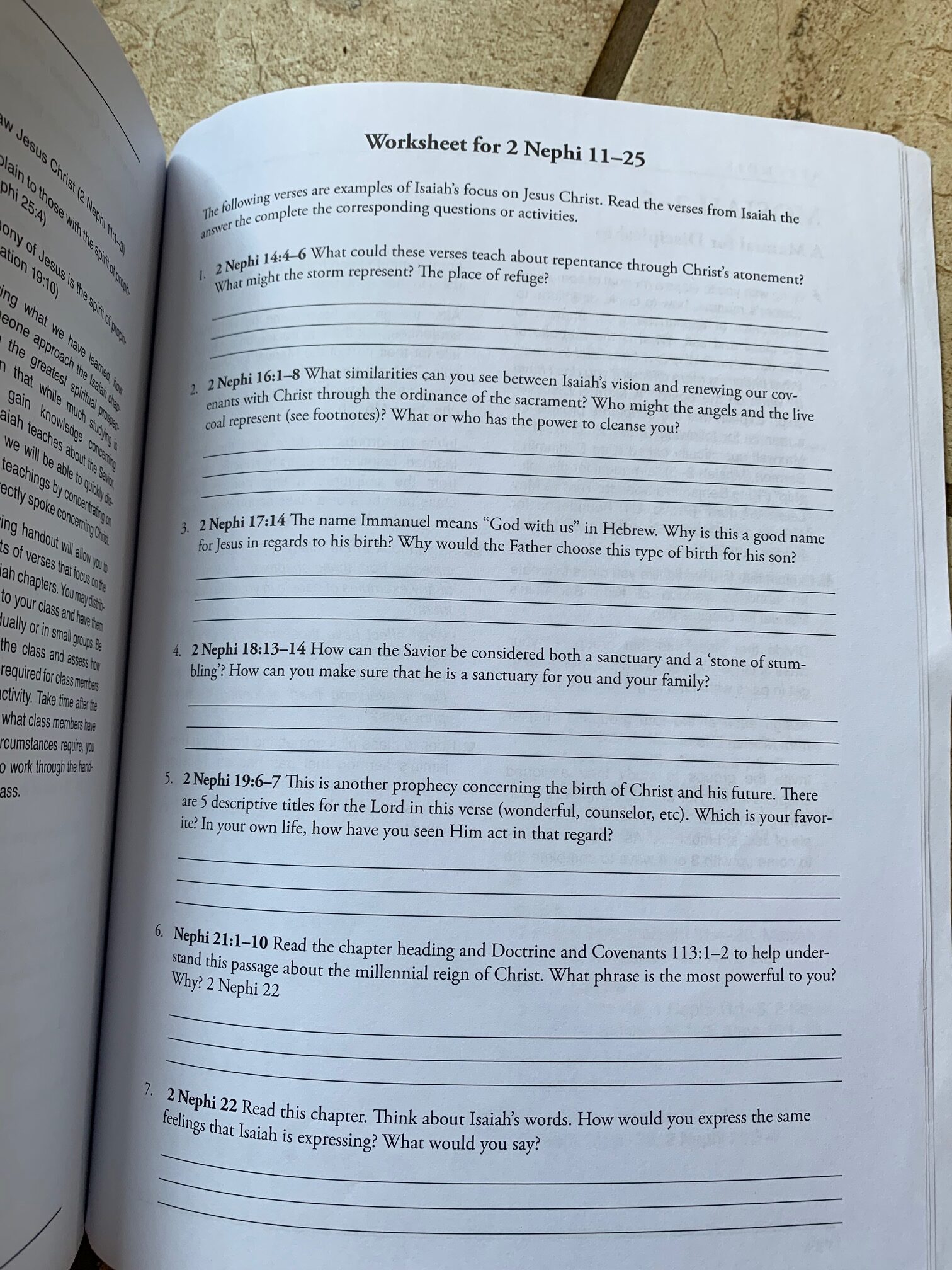
In addition, the book contains a topical index in the back that can help teachers find even more ideas. For example, you’re teaching about faith, and none of the lesson ideas in the manual or in Teaching the Book of Mormon Part One’s context make sense for your students. Just flip to the index and look up “Faith”. You’ll be able to cross reference to more ideas that you can check out.
Helps for Home Study Teachers / Catching Up
I am the product of home study Seminary, and I try to think about how ideas can be adapted to use in the home study classroom whenever I evaluate an idea or material. The appendix of Teaching the Book of Mormon, Part 1 is something I’ve never seen in a teaching materials book before: it contains a list of several chapters that can be combined into a single lesson. Two lessons include ready-made worksheets that can be photocopied for use during class. I think home study teachers will find this appendix very useful in teaching their students, and Come Follow Me teachers will be able to use this index to combine materials in a sensible way that matches up with the new curriculum.
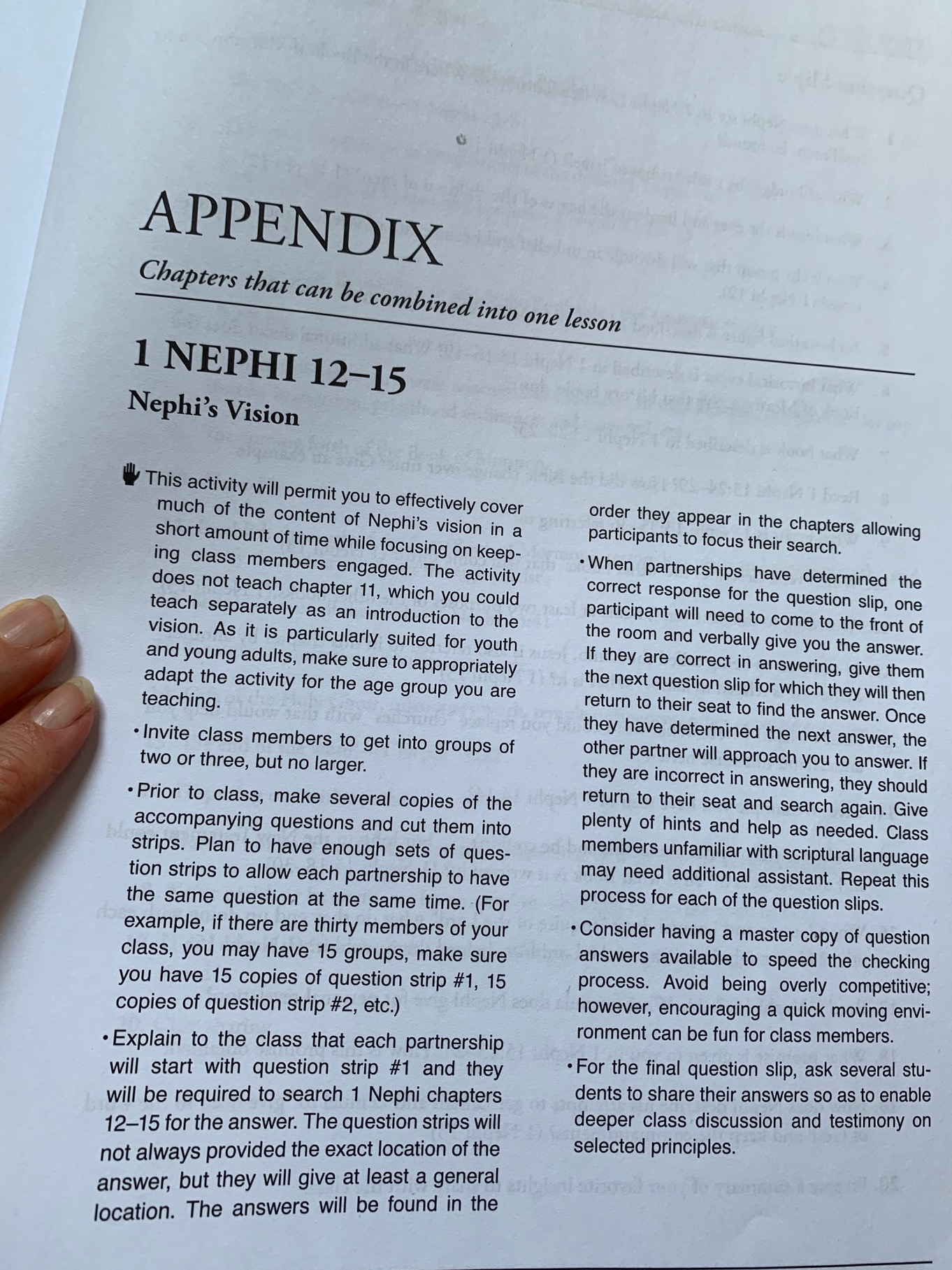
Daily teachers will be able to use the lessons in the appendix for “catch up” if they get behind teaching. In our area, Seminary gets to be a little bit difficult during the second quarter because of weather-related school cancellations. These lessons will be very helpful to teachers with a need to group a larger section of material together and still teach a quality lesson.
The appendix was the most surprising and potentially time-saving part of Teaching. I was disappointed that there are only three lessons in the appendix. I hope that the authors are able to share more ideas to add to the appendix if the book goes into a second edition. I always appreciate alternate teaching suggestions from the pacing guide, as I try to customize my reading chart to take approximately the same amount of time each night. The current pacing guide has some weeks reading 18 chapters, while others cover just 4. A more realistic reading schedule would be helpful for home study teachers.
Layout
I realize that page layout isn’t normally a part of a book review, but with my background in design I always notice this first. The front cover is ugly. I assume that Cedar Fort is using an in-house designer because all their book covers look the same. Apparently they get a bulk discount on dirt-brown ink…. Anyway, look past the cover, and you’ll see that the inside of the book is very sensibly laid out. Text is written in two columns with a space at the bottom to write notes and plenty of space in the margins. The font is very readable, though personally I think the scripture text could be in an even smaller font to give the lesson tips more emphasis, or perhaps the line height could be reduced. Including the BoM text was necessary, but it does take up space. I think a left border would have helped emphasize the lesson material a little more, too, but really, too much more might have been distracting.
Italicized sans-serif text is difficult for me to read, and I’d get rid of that, or limit it to one type of teaching idea. The current edition italicizes both questions and “look for”s. Those are different teaching techniques, and I’d personally only italicize the questions. Bold text is not overused, and only important items are emphasized.
The little “alert” graphics in front of each teaching idea are helpful for finding certain types of ideas quickly. I am certain I’ll be looking for the lightning bolt lesson openers routinely when I prepare lessons this school year. The layout makes it very easy to find lesson ideas for any given reading block or scripture passage.
I might have added printed thumbtabs so that you can see where a book ends or begins just by looking at the edge of the book, but each page does include the chapter and book at the top, so it’s still pretty easy to find the passage you’re teaching.
There are some minor issues like side margins not matching top margins on the gray inset boxes and awkward spacing caused by the different icon widths, but probably no one else would notice that kind of thing but me.
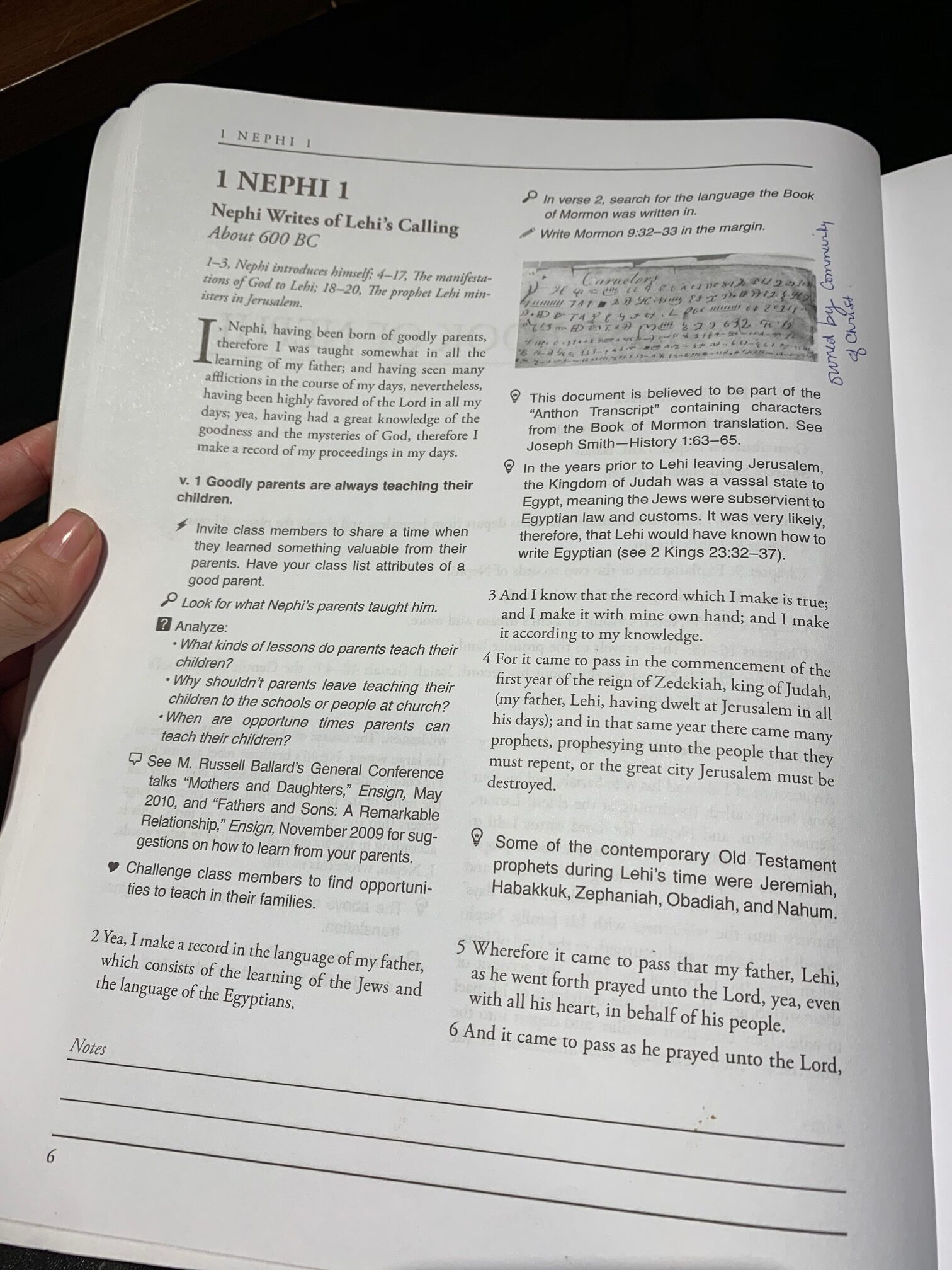
Conclusion
Teaching the Book of Mormon, Part 1 is a book that ought to be included in the library of every Seminary teacher. These supplemental ideas will help you prepare quality lessons that engage students, help them develop their own testimony, and make your lesson planning time shorter. I can’t recommend this book enough. After the manual, this was the resource I used most often in supplementing my lessons when I taught Book of Mormon.
Where to buy
This book retails for $24.99, but it is available cheaper at Amazon.com.

